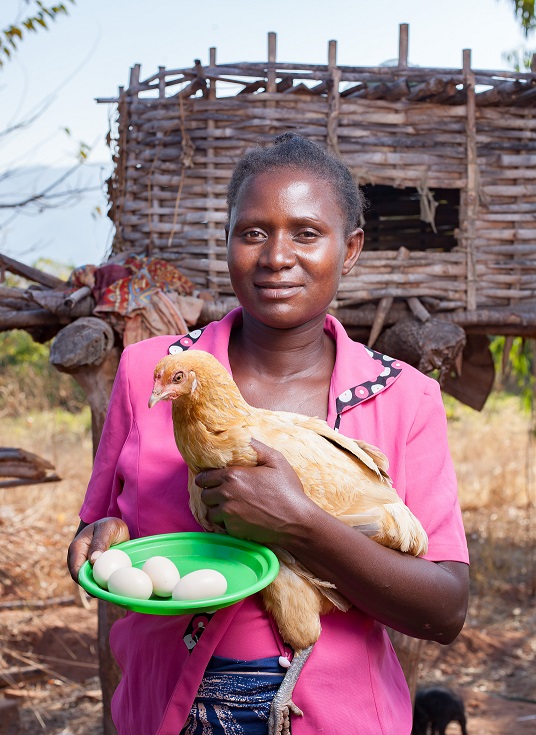Village Chickens – a sustainable and healthy solution to food insecurity.
By guest blogger Faith Considine. Faith recently completed a Bachelor of Business/ International Relations, majoring in Global Business and Diplomacy at Bond University. She worked as an intern for KYEEMA in 2017/2018 on many initiatives including our ‘Happy Chickens’ project with SELF in Fiji’.
Food in the Anthropocene: the EAT–Lancet Commission on healthy diets from sustainable food systems, a recent report published in The Lancet medical journal by a group of 37 researchers from 16 countries calls for a “radical transformation of the global food system.”
According to the authors, “Food is the single strongest lever to optimise human health and environmental sustainability on Earth. However, food is currently threatening both people and planet.”
Leah Msumba, a poultry farmer in rural Malawi. Photo credit: Richard Nyoni.
While still under discussion by wider academic and professional communities, the report’s “healthy reference diet” advocates for a 50% reduction of red meat and a 100% increase in the consumption of legumes, nuts, fruit and vegetables. The diet also advocates for a low to moderate amount of seafood and poultry consumption.
However, where communities do not have access to nutritionally dense food, particularly in Sub–Saharan Africa, the report acknowledges that animal-source foods can improve dietary quality, micronutrient intake, nutrient status and overall health.
Fortunately, village chickens are an environmentally sustainable and nutritionally-dense source of food. In contrast to intensively-raised poultry whose feed production and transport contributes to greenhouse gas emissions, village chickens’ carbon and water footprints are low[1].
Village chickens are a vital component of the interaction between crop and livestock production. These chickens do not require commercial feed and instead scavenge, eating pests and other foodstuffs not consumed by people, in the process. Their manure is also nutrient dense and adds organic matter to soils, improving water-holding capacity and structure.
The report also recognises the benefits of “replacing calories from a staple starchy food with an egg” in reducing stunting and improving the nutritional quality of a child’s diet in low- and middle-income countries.
With the world’s population expected to reach 10 billion by 2050, Kyeema Foundation believes village poultry will be an environmentally-friendly essential source of high quality protein and micronutrients consumed by many.
[1] Small-scale poultry and food security in resource-poor settings: A review




